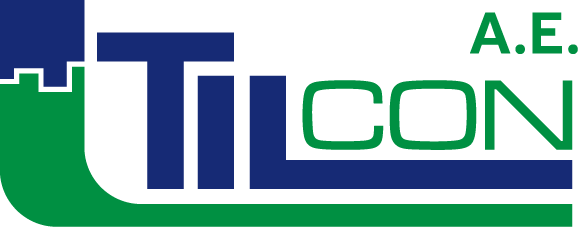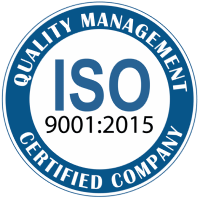Introduction to Aluminum and Corrosion
Does Aluminum Rust?A Detailed Explanation about Aluminum Corrosion.
- Introduction to Aluminum and Corrosion
- Historical Context and Applications of Aluminum
Aluminum has been used extensively across various industries due to its unique properties,such as lightweight, durability, and corrosion resistance. From aerospace to automotive and construction, aluminum’s development and significance have been pivotal in moderntechnological advancements.
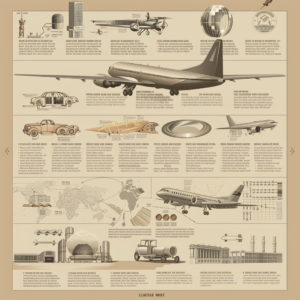
Fundamental Corrosion Principles
Corrosion is a natural process involving the gradual destruction of metals through chemicalreactions with their environment. For metals like iron, this results in rust. Understanding thebasics of corrosion, including electrochemical reactions and environmental impacts, sets thefoundation for exploring aluminum’s behavior.
Debunking Myths about Aluminum Rusting
Unlike iron, aluminum does not rust; it corrodes in a different way. Rust is specific to ironand steel, forming red oxide flakes that deteriorate the metal. Aluminum, however, forms athin, protective oxide layer when it corrodes, which shields it from further damage. This distinction is essential for industries relying onaluminum for its durability and corrosionresistance.
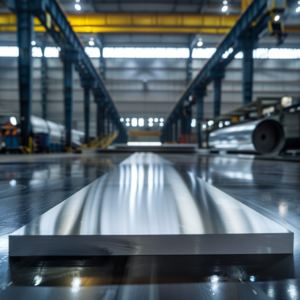
Comprehensive Overview of Aluminum Corrosion
Aluminum corrosion involves forming a protective oxide layer that shields the metal fromfurther deterioration. This process differs from rusting iniron, as the oxide layer is stable andself-repairing. Understanding this behavior is crucial for industries relying on aluminum forlongevity and performance.
The Chemistry of Aluminum Corrosion
Aluminum Oxidation Process
When aluminum is exposed to oxygen, it undergoes a chemical reaction known as oxidation.This process results in the formation of aluminum oxide on the metal’s surface. Unlike rust iniron, the aluminum oxide layer is thin, uniform, and highly adherent, providing a protectivebarrier against further corrosion. This oxide layer is stable and self-repairing, meaning if it gets damaged, it quickly reforms, maintaining its protective qualities. The oxidation processis crucial for aluminum’s durability and widespread use in various industries, as it ensures themetal remains resilient in a wide range of environmental conditions.
Formation of Aluminum Oxide Layer
The formation of the aluminum oxide layer is a critical process that enhances the durability ofaluminum. When aluminum is exposed to oxygen, it rapidly forms a thin, uniform oxide layeron its surface. This layer is only a few nanometers thick but is incredibly stable and adherent,preventing further oxidation of the underlying metal. The aluminum oxide layer is self-healing; if the surface is scratched, the oxide reforms almost immediately, maintainingcontinuous protection. This protective layer significantly contributes to aluminum’sresistance to corrosion, making it a preferred material in industries where longevity andresilienceare essential.
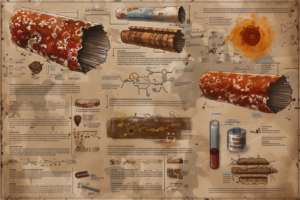
Electrochemical Reactions Involved
Aluminum corrosion involves complex electrochemical reactions where aluminum atomslose electrons, becoming positively charged ions. This electron transfer process is critical inthe formation of the protective oxide layer. In an electrochemical cell, aluminum acts as theanode, oxidizing and releasing electrons. These electrons then travel to the cathode, wherethey participate in reduction reactions. Environmental factors like the presence of electrolytes(e.g., water with dissolved salts) can accelerate these reactions, impacting the corrosion rate.
Understanding these electrochemical processes is essential for developing effective corrosionprevention strategies and ensuring aluminum’s longevity.
Impact of Environmental Factors on Corrosion Rate
Environmental factors significantly influence the rate of aluminum corrosion. Humidity, forinstance, accelerates corrosion by providing the necessary moisture for electrochemicalreactions. Higher temperatures increase reaction rates, leading to faster corrosion. Pollutants,such as sulfur dioxide and chlorides, exacerbate corrosion by forming aggressive electrolyteson the metal surface. Understanding these environmental impacts is crucial for designingeffective corrosion prevention strategies. Industries must consider these factors whenselecting materials and implementing protective measures, ensuring aluminum’s durabilityand performance in various conditions.
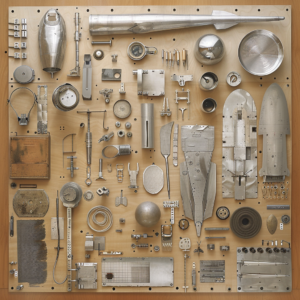
Factors Affecting Aluminum Corrosion
Environmental Influences
Various environmental conditions, including humidity, temperature, and pollutant levels,affect aluminum’s corrosion rate. These factors must be considered when selecting materialsfor specific applications to ensure aluminum’s long-termperformance.
Material Composition
The composition of aluminum, particularly the presence of alloying elements, significantlyaffects its corrosion resistance. Pure aluminum, while highly resistant to corrosion due to itsprotective oxide layer, is often too soft for many applications. Therefore, it is commonlyalloyed with elements like copper, magnesium, silicon, and zinc to enhance its mechanicalproperties. However, these alloying elements can impact corrosion behavior. For instance,copper increases strength but can reduce corrosion resistance, while magnesium improvesboth strength and corrosion resistance. Understanding the effects of these elements helps inselecting the right alloy for specific applications, balancing performance with durability.
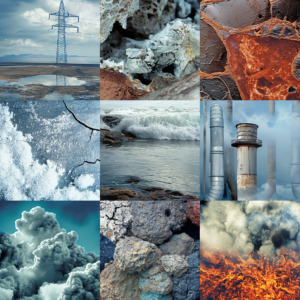
Surface Treatments
Surface treatments are essential for protecting aluminum from corrosion and extending itsservice life. Anodizing is a common technique where aluminum is electrolytically treated tothicken its natural oxide layer, significantly enhancing its corrosion resistance and providinga durable, aesthetic finish. Painting and coating with polymers or other materials also serve asbarriers against environmental factors, preventing moisture and pollutants from reaching themetal surface. Each treatment offers distinct advantages depending on the application, fromindustrial machinery to consumer electronics. Understanding these techniques helps inselecting the most effective method for maintaining aluminum’s integrity and appearance.
MechanicalStress
Mechanical stress and fatigue significantly affect the corrosion behavior of aluminum.Repeated stress cycles can cause micro-cracks and surface damage, which disrupt theprotective oxide layer and expose the metal to corrosive environments. This phenomenon,known as stress corrosion cracking, combines mechanical and chemical deterioration, leadingto structural failures. Fatigue, resulting from cyclic loading, exacerbates these effects byweakening the material over time. Understanding these interactions is crucial for designingaluminum components that withstand both mechanical and environmental challenges,ensuring safety and longevity in applications ranging from aerospace to automotiveindustries.
Comparison with Other Metals
Iron and Steel
Iron and steel are more prone to corrosion compared to aluminum due to their differentchemical properties. When iron is exposed to moisture and oxygen, it forms iron oxide,commonly known as rust, which flakes off and exposes more iron to corrosion. Steel,an alloyof iron, behaves similarly but can be made more corrosion-resistant with the addition ofelements like chromium, forming stainless steel. In contrast, aluminum forms a stable oxidelayer that adheres to the surface, protecting the metal underneath from further corrosion. Thisfundamental difference makes aluminum a preferred material in environments wherecorrosion resistance is critical.
Copper
Copper corrodes differently from aluminum, forming a distinctive green patina over time.This patina, composed of copper carbonate, protects the underlying metal from furthercorrosion, similar to the aluminum oxide layer. However, copper is more susceptible tocorrosion in the presence of certain pollutants like sulfur compounds, which can lead to theformation of copper sulfide. Unlike aluminum, which is lightweight and forms a thin oxidelayer, copper is heavier and its patina is thicker and more visually distinct. Understandingthese differences helps in selecting the appropriate material for applications where bothaesthetic and corrosion resistance are important factors.
Stainless Steel
Stainless steel, known for its superior corrosion resistance, owes this property to the presenceof chromium. When exposed to oxygen, chromium forms a thin, stable oxidelayer on thesteel’s surface, preventing further corrosion. This passive layer is similar to the aluminumoxide layer but offers even greater protection in harsh environments. Unlike aluminum,stainless steel maintains its structural integrity and aesthetic appeal under corrosiveconditions, making it ideal for applications in marine, chemical, and architectural industries.Comparing these metals, stainless steel offers unmatched corrosion resistance but is heavierand often more expensive than aluminum.
Zinc
Zinc is widely used for its excellent corrosion resistance, particularly in the process ofgalvanization, where a protective zinc coating is applied to steel or iron to prevent rust. Zinccorrodes at a much slower rate than iron, forming a stable zinccarbonate layer that shieldsthe underlying metal. This is similar to the protective oxide layer on aluminum but offersdistinct advantages in heavy-duty applications like construction and automotive industries.Unlike aluminum, zinc is not typically usedas a structural material but rather as a protectivecoating. Comparing these metals, zinc provides superior sacrificial protection, whilealuminum’s corrosion resistance is inherent to the metal itself.
Practical Applications and Prevention
CorrosionPrevention Methods
Preventing aluminum corrosion involves several techniques aimed at protecting the metalfrom environmental factors. One common method is anodizing, which enhances the naturaloxide layer, making it thicker and more durable. Applying protective coatings, such as paintor polymer films, creates a barrier against moisture and pollutants. Regular maintenance,including cleaning and inspection, ensures that protective layers remain intact and effective.These methods not only extend the lifespan of aluminum products but also maintain theirstructural integrity and appearance, making them suitable for various applications fromaerospace to consumer goods.
Case Studies of Aluminum Use
Aluminum’s versatility and corrosion resistance have led to its successful application innumerous industries. In the aerospace industry, aluminum’s lightweight properties contributeto fuel efficiency and performance. Case studies from companies like Boeing highlight theuse of advanced aluminum alloys in aircraft structures, improving durability and reducingmaintenance costs. In the automotive sector, aluminum is used for body panels and enginecomponents, enhancing vehicle performance and efficiency. Tesla’s use of aluminum in itselectric vehicles demonstrates significant weight reduction and energy efficiency. Theseexamples illustrate how aluminum’s unique properties drive innovation and success acrossvarious applications.
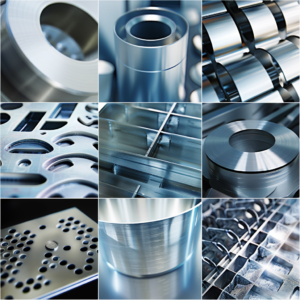
Industry-Specific Applications
Aluminum’s unique properties make it invaluable acrossvarious industries. In the aerospacesector, its lightweight yet strong characteristics are crucial for aircraft design, improving fuelefficiency and performance. For example, Boeing uses advanced aluminum alloys to enhancethe durability and reduce the weight of its aircraft. In the automotive industry, aluminum’suse in body panels and engine components reduces vehicle weight, leading to better fueleconomy and lower emissions. Tesla’s electric vehicles showcase aluminum’s role inachieving significant weight reductions and energy efficiency. In construction, aluminum isfavored for its corrosion resistance and strength, making it ideal for structures exposed to theelements. In electronics, aluminum’s excellent conductivity and thermal properties areleveraged in components such as heat sinks and casings. These applications highlightaluminum’s versatility and essential role in modern technology and infrastructure.
Maintenance and Inspection Tips
Regular maintenance and inspection are crucial for preventing aluminum corrosion andensuring its longevity. Cleaning aluminum surfaces periodically with mild detergentsremoves contaminants that can accelerate corrosion. Applying protective coatings, such aspaint or anodized layers, adds an extra barrier againstenvironmental factors. Inspections should be conducted regularly to identify any signs of wear, damage, or corrosion. If anyissues are detected, they should be addressed promptly to prevent further deterioration. Inindustrial applications, more advancedtechniques such as non-destructive testing can be used to assess the integrity of aluminum structures. By following these best practices, theperformance and durability of aluminum can be significantly enhanced.
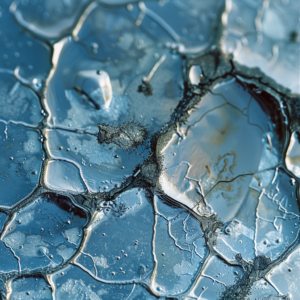
Conclusion
The study of aluminum corrosionreveals a complex interplay of chemical reactions andenvironmental factors that contribute to its resistance to deterioration. Unlike iron,aluminum forms a stable and protective oxide layer that shields it from further corrosion.This understanding is crucial for industries that rely on aluminum for its durability andlightweight properties. Comparing aluminum with other metals like iron, copper, stainlesssteel, and zinc, highlights aluminum’s unique advantages and challenges. Effective corrosionprevention methods, regular maintenance, and inspection are essential to maximizingaluminum’s lifespan. Real-world case studies across aerospace, automotive, construction,and electronics demonstrate aluminum’s versatility and transformative impact. Movingforward, continuous research and innovation in material science will further enhancealuminum’s applications and performance

